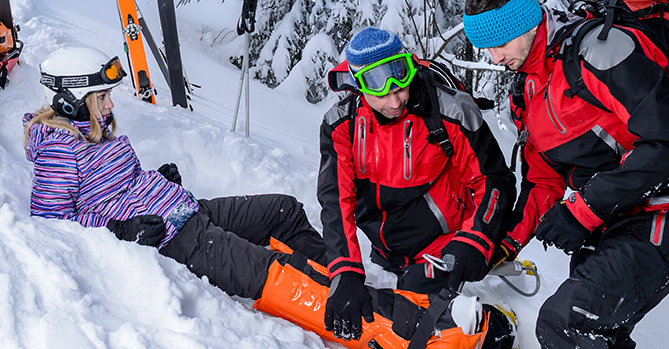5 Ways to Prevent Injuries on the Ski Hill

According to new data released by the Canadian Institution of Health Information (CIHI), Skiing and Snowboarding injuries are now twice as frequent as those seen in hockey. Injuries commonly seen on the slopes are muscle strains, ligamentous sprains, joint dislocations and fractures. The good news is that the majority of these injuries are avoidable!
The sight of snow on the mountains overlooking Vancouver brings joy to many in the cold winter months. More and more Vancouverites are spending their time on the slopes taking part in winter sports such as snowboarding and downhill skiing which are available right here on our doorstep.
What can be done to prevent you from becoming one of 5,600 Canadians seriously injured on the slopes each year?
Over the past 20 years a strong focus has been placed on injury prevention. It is important to identify the intrinsic and extrinsic factors that may predispose and individual to injury.
What is the Difference Between Extrinsic and Intrinsic Factors?
Extrinsic or external factors include equipment, ambient temperature, snow conditions, while Intrinsic or internal factors include age, biomechanical imbalances, fatigue and poor conditioning.
Identifying and Changing What We Can
While a lot of emphasis has been placed on extrinsic safety equipment including always wearing a helmet, Kinesiologists can help reduce some modifiable intrinsic factors. Today we will identify some intrinsic factors and provide a few interventions to help prevent injury and or chronic conditions. Although some things like age, gender and skeletal structure can not be changed, there are several adaptations to protect an individual.If you have had a previous injury (even if it is no longer pain full) muscle imbalances and compensations often occur following an injury, resulting in changes in your movement patterns and muscle function. Furthermore, poor core strength impedes your ability to control your pelvis and spine and hence your centre of gravity. Reduced flexibility of muscles and range of motion of the joints will reduce tensile strength and reduce the threshold before rupture. Oppositely, hyper-flexibility of the joints can predispose them dislocation.
5 Tips to Prevent Snowboarding and Downhill Skiing Injuries
Winter activities are often physically taxing on the body. Strong, healthy muscles and joints are better prepared for activity than those who lead a sedentary lifestyle. Keep active in the upcoming months and throughout the season with regular conditioning, stretching and aerobic exercise. This reducing your risk of injury possible injuries, improve performance and make the day on the slopes more enjoyable.
Take lessons from a qualified instructor to make sure you are safe and ready for the slopes. Learn how to fall properly, it is inevitable and might just save your bacon! At the same time, stay on terrain that matches your skill level.
Preparing the body for physical activity has numerous physiological and psychological benefits. A sport-specific warm-up will only take 10 mins and has been proven to reduce the risk of injury. Similarly, a cool-down post activity will help improve recovery post exercise (before you hop into the car for the ride home).
Never ski or snowboard to the point of exhaustion. According to the American Association of Orthopedic Surgeons, most serious injuries occur at the end of the day. Mental exhaustion will reduce concentration and reaction time. Furthermore, fatigued muscles reduce balance, control and support of the spine and extremities. Allow for sufficient rest periods between winter activities to allow for effective recovery.
Drink plenty of water before and during winter activity. Take regular breaks for snacks throughout the day.
Keep safe over the winter. For a full biomechanical assessment to identify and treat the internal factors of injury risk contact Lifemoves' Kinesiologist.






